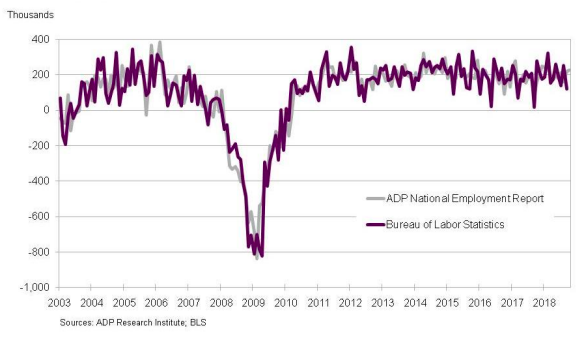U.S. employment rates climb further, rising in every sector in October, according to the ADP and Moody's Analytics National Employment Report.
The National Employment Report indicates that private sector employment increased 227,000 jobs from September to October.
The chart below demonstrates the rate of increase since 2013:
(Click to enlarge)
Moody’s Analytics Chief Economist Mark Zandi said the job market bounced back strongly in September, despite being hit by back-to-back hurricanes.
“Testimonial to the robust employment picture is the broad-based gains in jobs across industries,” Zandi said. “The only blemish is the struggles small businesses are having filling open job positions.”
The report revealed that construction jobs rose once again, and overall the goods-producing sector is predicted to increase by 38,000 jobs.
Below is a breakdown of job segments that saw increases in employment between September and October:
Natural resources and mining: Increase 4,000
Construction: Increase 17,000
Manufacturing: Increase 17,000
The service-providing sector is predicted to increase by 189,000 jobs, including:
Trade, transportation and utilities: Increase 61,000
Information: Increase 4,000
Financial activities: Increase 4,000
Professional and business services: Increase 36,000
Education and health services: Increase 31,000
Leisure and hospitality: Increase 40,000
Other services: Increase 13,000
ADP Research Institute Vice President and Co-Head Ahu Yildirmaz said despite a significant shortage in skilled talent, the labor market continues to grow.
“We saw significant gains across all industries with trade and leisure and hospitality leading the way,” Yildirmaz said. “We continue to see larger employers benefit in this environment as they are more apt to provide the competitive wages and strong benefits employees desire.”
NOTE: This report is a monthly measure of the change in total U.S. nonfarm private employment derived from actual, anonymous payroll data of client companies served by the company. The data is collected and processed with statistical methodologies similar to those used by the U.S. Bureau of Labor Statistics.






